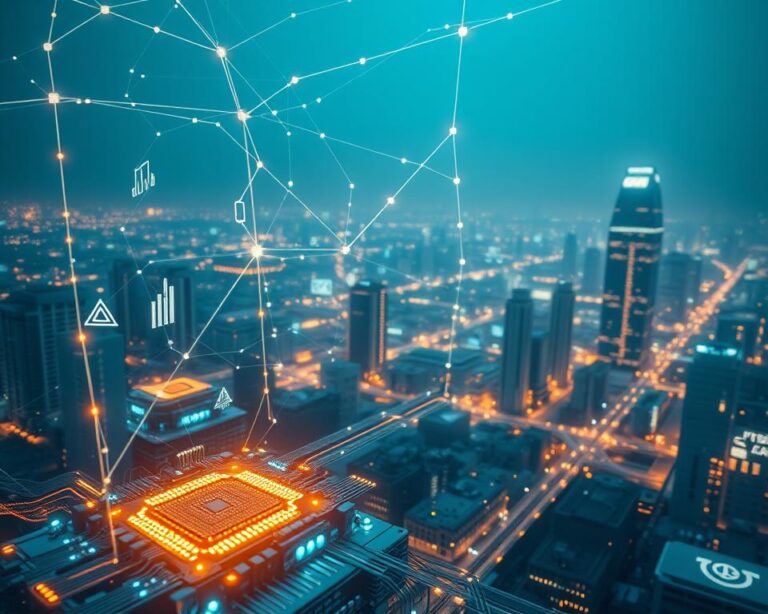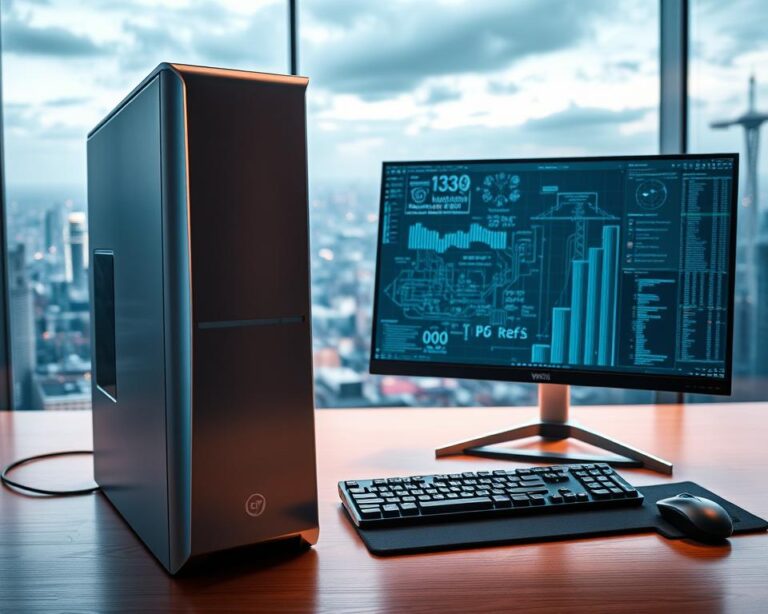
Pros and Cons of Technology: A Comprehensive Essay
Did you know that, according to a recent study, more than 4.9 billion people around the world are currently using the internet? This staggering statistic highlights the pervasive influence of technology in our daily lives. The pros and cons of technology essay will examine the dual nature of innovation, indicating how it has reshaped our existence, often in surprising ways. From the rapid evolution of digital tools to the touchpoints where technology intersects with education and communication, understanding the advantages and disadvantages of technology is crucial in navigating our modern world. This comprehensive essay serves to equip you with valuable technology essay writing tips while ensuring a balanced perspective on its role and impact in various aspects of life.

Key Takeaways
- Technology influences nearly every facet of modern life.
- Understanding the pros and cons is vital for responsible usage.
- This essay explores various aspects of technology’s role.
- Technology continues to evolve rapidly.
- Education and communication are greatly affected by technological advancements.
Understanding Technology and Its Evolution
Throughout the history of technology, humanity has witnessed remarkable changes that have transformed everyday life. From primitive tools used by early humans to the advanced devices of today, the technology evolution reflects our ongoing quest for improvement and efficiency. Major milestones, such as the Industrial Revolution, marked a significant shift in how we produced goods and interacted with the world around us.
The impact of technology is evident in various aspects of life, including communication, transportation, and manufacturing. As societies progressed into the Digital Age, the introduction of computers and the internet further revolutionized how we connect and share information. Each phase in the history of technology has brought about not only advancements but also challenges that require adaptation and forward-thinking solutions.
In this context, understanding the historical development of technology provides insights into potential future advancements. The continuous interplay between innovation and societal needs drives the technology evolution, emphasizing the importance of adapting to new possibilities and challenges that arise.

Pros and Cons of Technology Essay
The landscape of modern innovation presents an intriguing paradox. Technology has the ability to drive significant advancements, yet it creates challenges that society must navigate. This dual nature of innovation reveals itself in various aspects of daily life. From smartphones that connect us globally to the internet that revolutionizes how we access information, technology impacts nearly every facet of existence.
Exploring the Dual Nature of Innovation
The pros and cons of technology essay often highlights the balance between benefits and challenges. For instance, while communication technologies enhance connectivity and make information readily available, they can lead to issues such as decreased face-to-face interactions and privacy concerns. Statistics indicate that over 70% of adults feel reliant on their devices, which underscores the profound influence on social behaviors.
How Technology Shapes Modern Life
Modern technology pros and cons shape our everyday experiences. Advances in communication, work productivity, and entertainment demonstrate this dynamic. People routinely access news and updates on their mobile devices, while businesses benefit from efficiency improvements. Yet, as technology becomes more integrated into society, issues like digital addiction arise, prompting discussions about the long-term effects of such dependency.

Advantages and Disadvantages of Technology
The landscape of technology continues to evolve, influencing various aspects of daily life and work. Understanding the advantages and disadvantages of technology becomes essential for individuals and businesses alike. Many people experience numerous benefits of technology, while they also face significant challenges of technology that can affect personal and professional spheres.
Benefits to Daily Life and Work
Technology has transformed everyday tasks, making them more efficient and simpler. For instance, communication tools such as smartphones and instant messaging apps allow people to connect effortlessly, enhancing both personal relationships and workplace collaboration. Businesses leverage technology to streamline processes and improve productivity through tools like project management software and automation, showcasing the pronounced benefits of technology.
- Increased productivity through efficient tools
- Enhanced communication and connectivity
- Access to vast amounts of information
- Improved convenience in transactions and planning
Challenges and Drawbacks
Despite these advancements, the challenges of technology cannot be overlooked. Increasing reliance on digital tools raises concerns regarding job displacement, particularly in industries where automation replaces manual labor. Moreover, issues surrounding mental health, such as addiction to devices and reduced face-to-face interactions, highlight how technology can lead to adverse effects. Balancing these advantages and disadvantages of technology is crucial for maintaining well-being in a tech-driven world.
- Potential reliance on technology leading to job loss
- Negative effects on mental health due to excessive screen time
- Challenges with data privacy and security
- Risk of miscommunication in digital interactions

Technology’s Impact on Society
The technology impact on society reaches into almost every aspect of daily life. It has transformed how we communicate, learn, and interact with one another. Social media platforms, such as Facebook and Twitter, have reshaped societal norms and behaviors, serving as the new marketplaces for ideas and influence. The rapid dissemination of information fosters a dynamic exchange of perspectives but can also lead to misinformation splattering communities.
As the digital landscape evolves, so do the social implications of technology. Online communities grow and change, allowing individuals to connect based on shared interests, regardless of geographical barriers. Although this fosters inclusivity, it raises concerns about isolation and digital addiction. People may find themselves prioritizing virtual interactions over face-to-face connections, which can disrupt traditional relationships.

Moreover, societal changes due to technology produce a layered reality where individuals navigate both physical and virtual worlds. This dual existence presents challenges, particularly in understanding the nature of relationships and communication. Digital platforms can distort realities, often leading to conflicts in perceptions and fostering divisions among diverse groups.
In addressing the societal dynamics prompted by these changes, it’s clear that understanding how technology shapes our lives becomes essential. As individuals and communities embrace technological advancements, reflecting on their broader implications will aid in fostering a balanced, harmonious society.
Technology in Education Essay
The integration of technology into education has transformed traditional learning environments. Digital learning tools have made education more accessible and engaging for a wide range of learners. This section explores the rise of these tools and the accompanying challenges faced in digital classrooms.
The Rise of Digital Learning Tools
Various digital learning tools have emerged in recent years, such as learning management systems, educational apps, and virtual classrooms. These platforms enhance the teaching and learning experience by facilitating a more personalized approach. For instance, learning management systems like Google Classroom and Canvas empower educators to deliver tailored content and track student progress effectively. The flexibility of online courses allows learners to access materials at their convenience, promoting a self-paced approach.
Challenges Faced in Digital Classrooms
Despite the numerous advantages presented by educational technology, several challenges persist. The digital divide remains a significant barrier, as not all students have equal access to technology. This disparity can lead to inequalities in learning opportunities. Additionally, educators often face difficulties in maintaining student engagement in virtual settings. The abundance of distractions available online can impede focus and hinder learning outcomes. It is crucial to address these educational technology challenges to maximize the benefits of technology in education.
| Digital Learning Tools | Benefits | Challenges |
|---|---|---|
| Learning Management Systems | Accessibility of resources | Requires reliable internet access |
| Virtual Classrooms | Flexibility in learning | Potential for decreased engagement |
| Educational Apps | Interactive content | Over-reliance on devices |
Technology and Communication Essay
In today’s fast-paced world, technology has transformed communication in ways previously unimaginable. From instant messaging and social media to video calls, digital communication has become an essential part of our daily lives, enabling people to connect across vast distances effortlessly. The emergence of these tools has not only made staying in touch easier but has also altered the norms of interaction, reflecting the hallmark of modern society.
Improving Connections Across Distances
Technological advancements have significantly improved the speed and efficiency of communication. Platforms like Zoom, WhatsApp, and Facebook Messenger facilitate real-time conversations, making staying connected easier. These innovations allow individuals to share ideas, collaborate on projects, and maintain relationships, regardless of physical separation. The convenience of digital communication fosters a sense of belonging and community that transcends geographical barriers.
The Challenge of Miscommunication in a Digital Era
Despite the benefits, the challenges of digital communication cannot be ignored. The lack of non-verbal cues in written communication can lead to misunderstandings. Tone, intent, and nuance often get lost in text messages, resulting in potential conflict or confusion. Moreover, reduced face-to-face interaction can diminish the quality of relationships. While we enjoy the advantages of staying connected, the complexities of digital messaging require careful consideration.
| Communication Aspect | Traditional Methods | Digital Communication |
|---|---|---|
| Speed | Often slow, reliant on mail or in-person meetings | Instantaneous, via messaging and video calls |
| Non-verbal Cues | Present during face-to-face interaction | Limited, can lead to misinterpretation |
| Accessibility | Restricted to physical locations | Global access, anytime and anywhere |
| Records of Communication | Difficult to maintain | Easy archiving and retrieval of messages |
Modern Technology Pros and Cons
Modern technology reshapes our daily interactions and experiences significantly, offering both benefits and challenges. In evaluating the modern technology pros and cons, one cannot ignore the convenience provided by devices such as smartphones and home automation systems. These innovations enhance efficiency, streamline communication, and improve quality of life.
Yet, with these advancements emerge pressing current technology issues. Cybersecurity threats are ever-present, putting personal data at risk. Privacy concerns have escalated as many devices collect and share user data, leading to distrust. Rapid technological progress can also affect mental health, with social media and constant connectivity contributing to anxiety and depression.
Effective technology assessments are essential to identify and mitigate these risks. Balancing the benefits of modern technology against its drawbacks will assist individuals and organizations in making informed decisions. The ongoing discourse around the modern technology pros and cons remains critical as we continue to navigate this complex landscape.
Ethical Considerations in Technological Advancements
As technology rapidly evolves, a host of ethical considerations in technology emerge, particularly regarding privacy and equitable access. Awareness of these issues helps society navigate the complexities created by modern innovations.
Privacy Concerns with New Technologies
The pervasive collection of personal data by tech companies raises significant privacy concerns. With devices and applications tracking user behavior, individuals may unknowingly surrender sensitive information. Companies like Google and Facebook have faced scrutiny for their data practices, leading to discussions on how to protect users effectively.
Implementing robust privacy regulations could safeguard personal data while fostering trust between users and technology providers. Consumers need clearer insights into how their data is used and the implications of sharing such information.
The Digital Divide and Access Inequality
The digital divide presents a pressing challenge, where access inequality affects millions. Socioeconomic status and geographical location often dictate who benefits from technological advancements, widening the gap between those with access to the latest innovations and those without. For instance, rural areas often lack the infrastructure essential for high-speed internet, leaving many without vital online resources.
Bridging this divide requires concerted efforts to ensure equitable access to technology, highlighting the necessity for policy changes and community initiatives. Addressing these disparities stands as a crucial step towards establishing a more inclusive digital landscape.
The Role of Technology in Business
Technology in business profoundly reshapes operations across various industries. Companies leverage advancements to gain an edge, focusing on increased efficiency and enhanced productivity through technology. Business automation streamlines tasks, allowing for quicker response times and reduced errors.
Increased Efficiency and Productivity
Integrating technology into business processes leads to substantial improvements in efficiency. Automated systems handle repetitive tasks, enabling employees to focus on more strategic initiatives. Data analytics tools provide insights that drive decision-making and optimize resource allocation. This approach enhances productivity through technology, empowering teams to achieve more within the same timeframe.
Risks of Automation and Job Displacement
While the benefits of business automation are evident, challenges accompany this transformation. Many workers face job displacement as machines take over tasks traditionally performed by humans. The ethical implications of this shift prompt discussions about retraining and supporting affected individuals. Businesses must balance the efficiency gained through automation with the responsibility of maintaining a stable workforce.
Technology and Health: A Double-Edged Sword
The intersection of technology and health offers remarkable benefits through various medical advancements while posing significant challenges to individual well-being. Innovations such as telemedicine, wearable health devices, and artificial intelligence diagnostics have drastically improved patient care and accessibility to health services. These advancements illustrate how technology enhances diagnostic accuracy and enables remote monitoring, effectively bridging gaps in healthcare delivery.
Advancements in Medical Technology
Telemedicine has redefined patient interactions, allowing individuals to consult healthcare professionals from the comfort of their homes. Wearable devices, such as fitness trackers and smartwatches, provide real-time health data, empowering users to take charge of their health. Artificial intelligence systems integrate vast amounts of data to assist in complex medical decisions, showcasing how technology supports healthcare professionals in delivering optimum patient care.
Health Risks Associated with Technology Use
While the benefits are substantial, the health risks of technology cannot be overlooked. Increasing screen time contributes to sedentary lifestyles, which have been linked to obesity and heart disease. Eye strain resulting from prolonged exposure to digital screens affects numerous individuals, leading to discomfort and decreased productivity. The psychological impacts of excessive device use, including anxiety and depression, further underscore the necessity of striking a balance between embracing technology and maintaining overall health.
Environmental Impact of Technology
The role of technology in shaping the environment is increasingly significant, highlighting both opportunities and challenges. Innovations in sustainability and tech have paved the way for advancements that promote environmental preservation. For example, renewable energy technologies such as solar panels and wind turbines contribute positively by reducing reliance on fossil fuels.
Positive Contributions to Sustainability
Renewable energy options exemplify how the environmental impact of technology can be constructive. By harnessing natural resources, these technologies minimize greenhouse gas emissions and combat climate change. The use of electric vehicles exemplifies another area where sustainability and tech converge, offering a cleaner alternative to traditional gas-powered cars. Efficient waste management systems supported by technology enhance recycling efforts and lower landfill contributions, ensuring a healthier ecosystem.
Negative Effects on Natural Resources
While the ecological challenges with technology often seem bleak, they deserve examination. The production of electronic devices leads to substantial e-waste, which poses severe environmental issues. Toxic materials from discarded gadgets seep into soil and water, impacting wildlife and human health. Additionally, resource depletion caused by constant demand for new technology strains the planet’s minerals and metals, pressing the need for improved recycling practices. The responsibility lies on society to address these negative aspects without compromising future sustainability.
Globalization and Technology
The intersection of globalization and technology has transformed the way we conduct business and interact across borders. Enhanced logistical capabilities streamline the movement of goods, making technology and trade more efficient and accessible. With rapid advancements in communication tools, businesses can now effortlessly connect with partners and consumers worldwide. This interconnectedness fosters economic growth and creates opportunities while reshaping the global marketplace.
How Technology Facilitates Global Trade
Technological advancements significantly simplify global trade. Automation in supply chains allows for quicker processing times, reducing the cost of transactions. E-commerce platforms enable small and medium-sized enterprises to reach international markets without substantial investment in infrastructure. In addition, global shipping solutions, optimized by real-time tracking systems, ensure timely deliveries for businesses engaged in technology and trade. Companies can easily adapt to market demands, resulting in a more responsive and agile economy.
Cultural Impacts of Global Connectivity
The rise of cultural connectivity through technology brings about both positive and negative consequences. Global communication networks allow for the sharing of diverse cultures, ideas, and practices, enriching societies. However, this same connectivity can lead to cultural homogenization, where local traditions and identities may diminish under the influence of dominant global cultures. Balancing the benefits of globalization and technology with the preservation of unique cultural heritage remains a crucial challenge for many communities.
| Impact | Positive Aspects | Negative Aspects |
|---|---|---|
| Economic Growth | Increased trade opportunities, access to new markets | Local businesses may struggle to compete with multinational corporations |
| Cultural Exchange | Enhanced appreciation of diversity, global awareness | Possible loss of local culture and traditions |
| Technological Advancement | Improved logistics and supply chain management | Potential job displacement due to automation |
Technology in Our Personal Lives
The integration of technology in personal life has transformed the way individuals engage with their daily routines. From smart devices enabling seamless home automation to fitness trackers promoting healthier habits, technology enhances convenience and overall quality of life. These advancements create a more connected and efficient lifestyle. Yet, while smart devices offer numerous benefits, they also present challenges, particularly around the management of screen time.
Enhancing Quality of Life with Smart Devices
Smart devices, such as smartphones, smartwatches, and home assistants, play a significant role in improving our personal lives. They facilitate tasks like setting reminders, controlling home environments, and monitoring health metrics. With technology in personal life, these tools help streamline daily activities, making it easier to maintain an organized lifestyle.
Managing Screen Time and Digital Detox
The reliance on technology can lead to excessive screen time, prompting the need for effective management strategies. Individuals are becoming more aware of the importance of balancing their online and offline worlds. Practices such as scheduling designated “tech-free” hours or engaging in outdoor activities support healthier habits. Digital detox trends encourage individuals to unplug, fostering deeper connections with themselves and others. Emphasizing the significance of managing screen time contributes to a more fulfilling life, helping people become more mindful of their technology usage.
Future of Technology: What Lies Ahead
The future of technology promises a landscape filled with exciting advancements that have the potential to transform everyday life. Key areas of focus include artificial intelligence, the Internet of Things (IoT), and quantum computing. These upcoming innovations will likely shape industries and societal interactions, creating new opportunities and challenges.
Technology predictions suggest a world where smart devices seamlessly communicate, enhancing convenience and efficiency. The integration of AI into various sectors will facilitate more personalized experiences, whether in healthcare, education, or entertainment. As smart homes evolve, energy management systems will become sophisticated, optimizing resource consumption significantly.
While the future of technology holds great promise, ethical considerations become paramount. As technology advances, issues concerning privacy and data security will require attention. The implications of widespread AI adoption must be thoughtfully navigated to mitigate risks of misuse and inequality.
In summary, the upcoming innovations may usher in a future defined by connectivity and intelligence. Balancing the advantages with ethical responsibility will be essential as society adapts to these monumental shifts.
Conclusion
As we reflect on the summary of technology’s impact, it’s essential to acknowledge the dual nature of innovation. Throughout this essay, we have explored how technology serves as a powerful tool that enhances our daily lives, alters our communication, and drives advancements in education and healthcare. However, along with these advantages come significant challenges, including issues of privacy, job displacement, and environmental consequences.
Final thoughts on technology highlight the importance of maintaining a balanced perspective. While embracing the technological advancements that improve our quality of life, we must also confront the difficulties they present. For sustainable integration into daily routines, society must prioritize thoughtful strategies that address these challenges, ensuring that technology remains an asset rather than a hindrance.
In closing, the path forward lies in our ability to adapt to change while being conscious of its implications. As we navigate this ever-evolving landscape, let us remain committed to fostering innovations that benefit humanity as a whole, creating a future where technology enriches our lives without compromising our values.



